
Article contents

Don’t panic – it’s not too late to start a pension at 60. You can still build up a decent retirement income. It’s often best to open a pension as soon as you can (they’re easy to do, we’ve run through it below). You’ll get a 25% boost from the government on your savings (with a personal pension), and your money will grow tax-free, in a sensible way, all managed by experts, and can keep growing after retirement.
“Help! I have no pension at 60. What should I do?”
First of all, don’t panic. It’s not too late to build your retirement savings, but it’s going to be more difficult, and you won’t have the same size pension if you started at 30, 40, or even 50 – but with a bit of help and planning, you can build up a pension.
Most importantly, don't feel like it’s a lost hope to start saving for retirement now, there’s still some good years of saving left, and your money can keep growing long after you retire – it doesn’t just stop when you hit retirement age!
Want to open a pension today? Here’s our recommended pension providers. And you can estimate your total pension pot at retirement and your yearly retirement income with our pension calculator.
A pension account is likely going to be your best option, rather than opting for saving money in a cash savings account, or relying on property (such as rental income), as pensions come with some huge benefits to grow your pension savings.
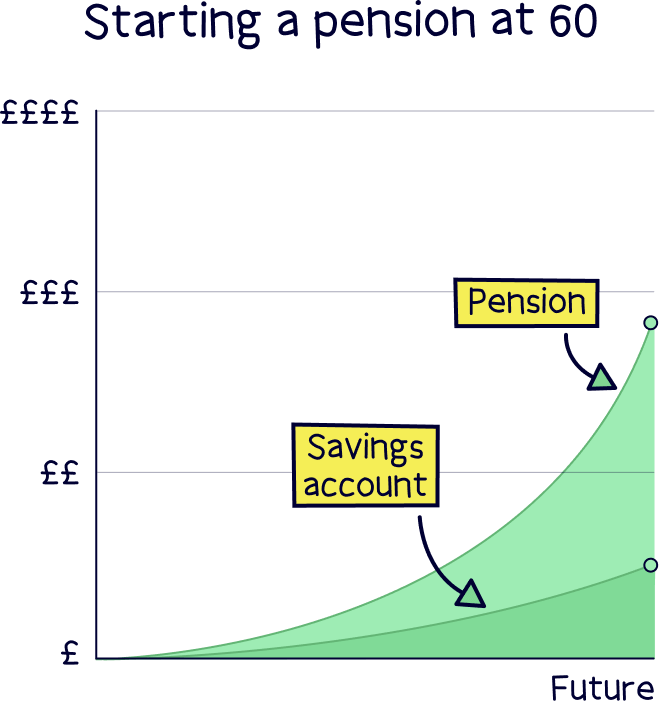
Note: even if you’re not working, you can still open and save into a pension (we’ll run through how below).
A key benefit to a pension is that if you open a personal pension (which is one you set up yourself), you’ll get a massive 25% bonus from the government on everything you add. We’re not joking!
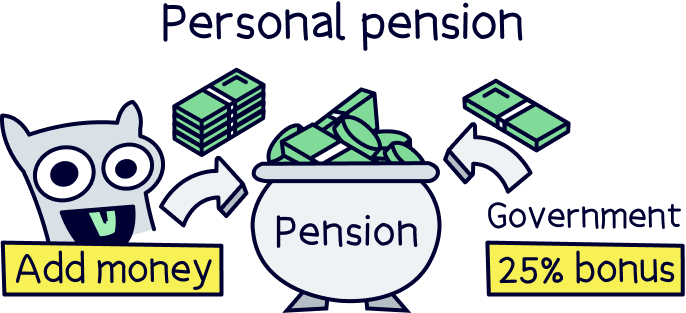
It gets better! If you are a higher rate tax payer you can get even more. We’ll run through all the benefits in detail just below, and why you should start a pension today, rather than putting it off until tomorrow.
Want to get a pension now? Here's a list of all our top recommended pensions.
Nuts About Money tip: here’s our guide to starting a pension at 60.
You’ll likely get the State Pension (the government pension) when you reach State Pension age, which is currently 66 (rising to 68).
Check the age you'll get the State Pension with our State Pension age calculator.
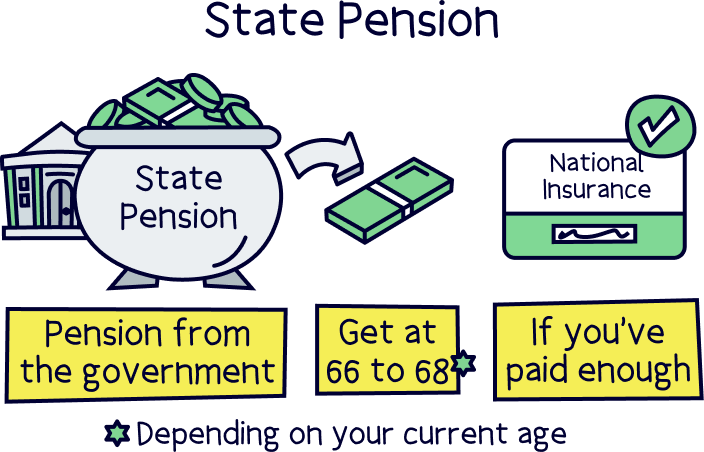
You’ll get the State Pension if you’ve paid at least 10 years worth of National Insurance contributions, and the full amount if you’ve paid 35 years worth.
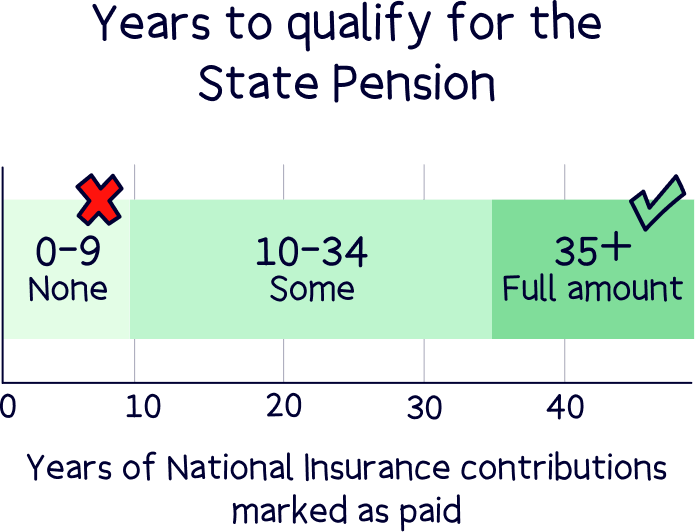
Nuts About Money tip: have you paid enough National Insurance contributions? You can check online for free within a few minutes with the government’s State Pension forecast tool, and then make up for previous years to fill in any gaps to get the full State Pension (up to the last 6 years)
The State Pension is currently £230.25 per week (£11,973 per year). Which likely isn’t enough to tide you over in retirement (it's less than minimum wage), a separate pension income (from a private pension) will really help.
The recommended minimum income in retirement is £14,400, which just covers food and bills, and a comfortable retirement is £43,100 per year. You’ll need a very hefty pension pot for that, but getting above the minimum income could be possible if you start saving soon (or have other savings).
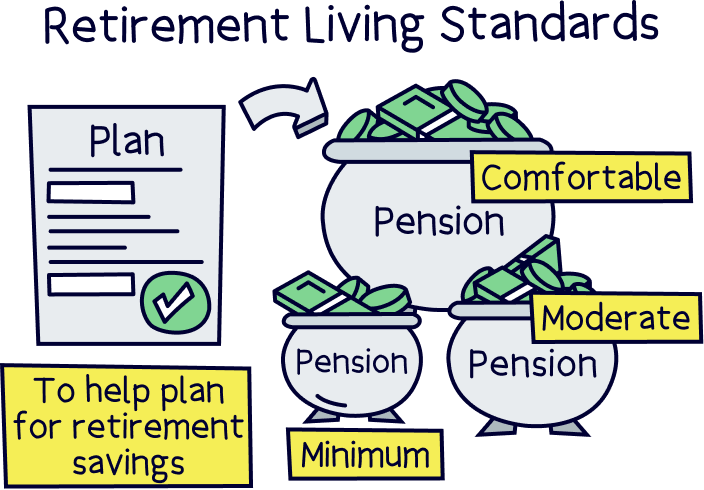
Our top pick is PensionBee – it’s easy to set up and use, low cost and has a great track record of growing pensions over time.
Note: here’s where to learn more about how much you’ll need in your pension pot for the income you want.
If you are employed, you'll probably be able to get a pension from your job, called a workplace pension. A workplace pension scheme is set up by your employer, often when you start a new job (called auto-enrolment), and your pension contributions are taken out of your pay directly so you pay no tax on the money added to the pension.
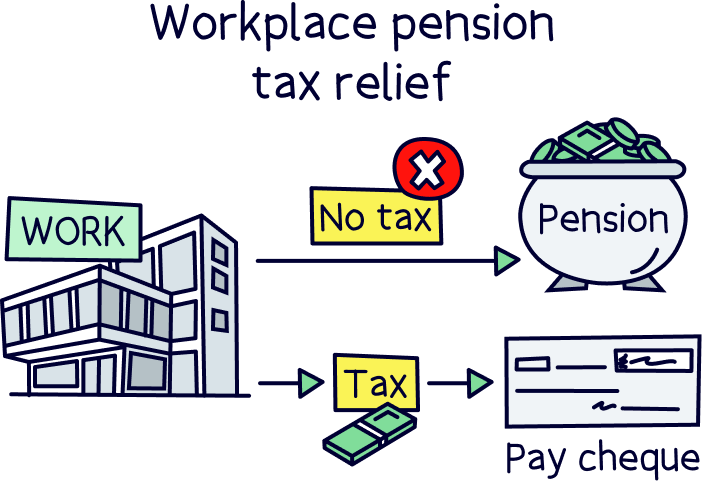
Another great thing about these pensions is that your employer has to save into it too (called employer contributions). Meaning if you pay in at least 5% of your salary, your employer has to add at least 3% by law. It’s a great bonus.
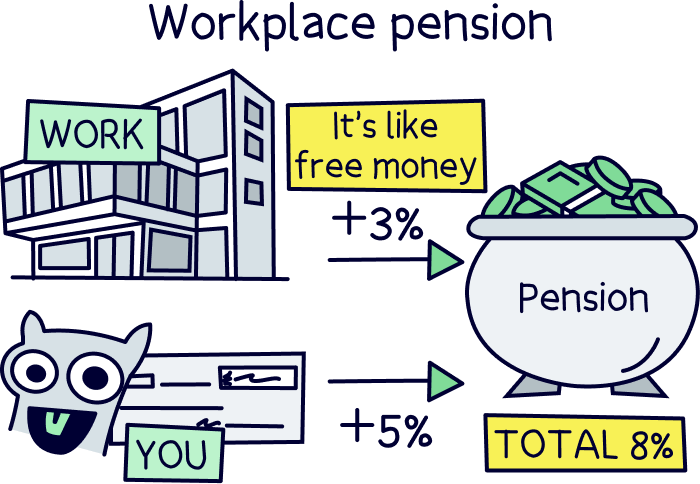
The downside is you don’t get to pick which pension provider to use, so it might not be a great one (perhaps high fees, bad customer service and not much pension growth over time). However, the free cash often makes up for this!
Otherwise, if you aren’t employed, or not earning enough for your employer to open one for you and contribute (you need to earn at least £6,240 per year), then a personal pension could be the best option (a pension you set up yourself). Check out our top personal (also called private) pensions if you want to open one.
Note: workplace pensions and personal pensions are both types of private pensions (pensions in your name, rather than the State Pension).
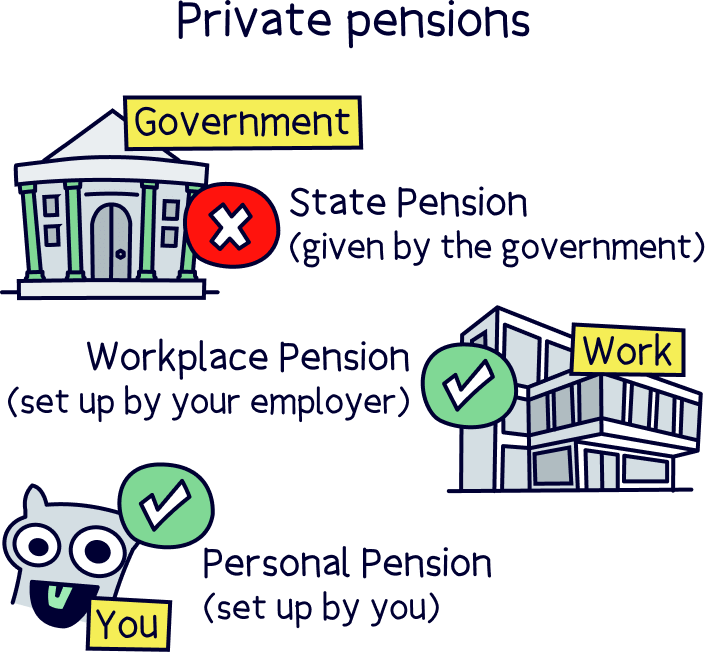
If you’re self-employed, you of course won’t get a pension from your employer, but you can open a personal pension, and they’re pretty great. We’ll run through the benefits and how to get one just below.
Note: to estimate your total pension pot at retirement and your yearly retirement income use our self-employed pension calculator.
If you’re also a limited company director, you have a couple of options, and can pay in from your limited company to save Corporation Tax – here’s where to learn more about pensions for limited company directors.
When you save into a pension, it’s intended to be tax-free, and if you save into a pension from work (a workplace pension), it comes out of your salary before you pay any tax.
But, with a personal pension, which is one you set up yourself, rather than your employer (it’s easy to do, we’ll run through it below), then you would have technically already paid tax on your income (as you pay into it after you’ve been paid). So, the government will refund this tax straight back into your pension with a 25% bonus.
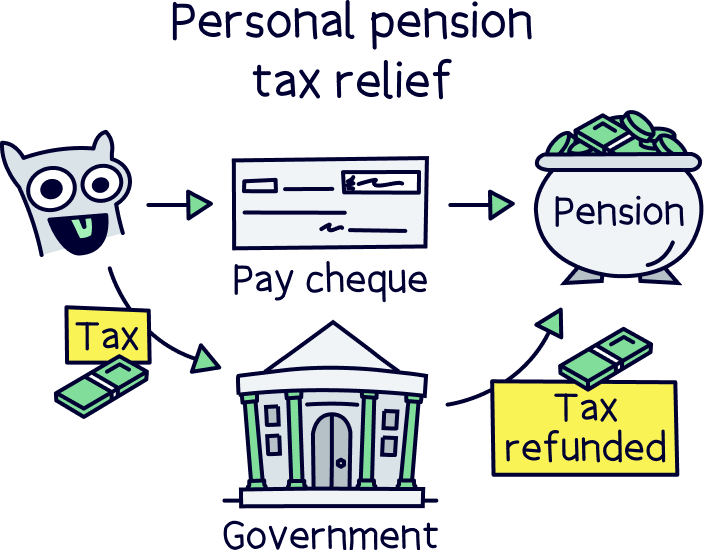
Technically, this is called tax relief. And if you’re a higher rate taxpayer (paying 40% tax and earning over £50,270 per year), or an additional rate taxpayer (paying 45% tax and earning over £125,140 per year), you can claim some of the tax back paid at those rates too (on a Self Assessment tax return). Find out how much money you could save with our pension tax relief calculator.
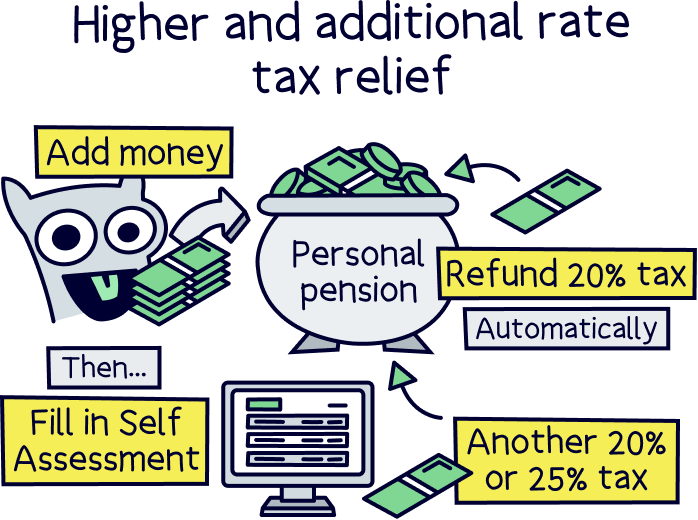
This makes a pension a great option for retirement saving – that’s a huge boost you won’t get with any other type of saving account at 60.
When you save money into a pension, it’s typically invested by experts with the aim to grow it larger over time (using sensible investment strategies). This means pensions typically grow much larger than saving cash and earning interest from a bank account.
Over time the difference can be huge, and even just a few years can have a big impact. This is thanks to something called compound interest, where the money you make, begins to make money, and this snowballs over and over.
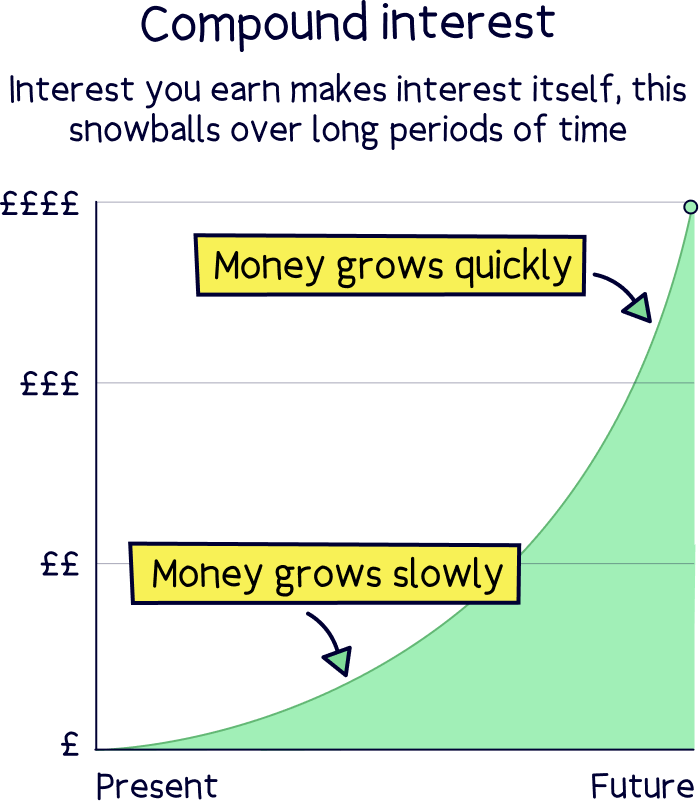
When your money is inside a pension account, it grows tax-free too – meaning there’s no tax to pay each year when it increases in value, so it can keep growing much faster over time. Plus, there’s no paperwork to do either.
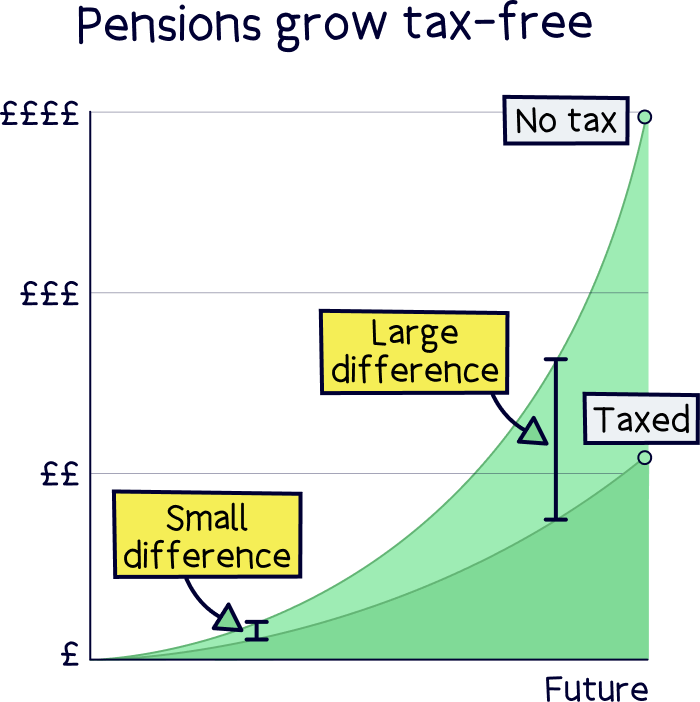
You might pay tax when you start withdrawing from it, it depends on your total income at the time, but 25% will normally always be tax-free (at most you only pay tax on 75% of it)...
When you want to withdraw money from your pension, you’ll be able to take 25% of it completely tax-free, and you can take this as a tax-free lump sum if you like (all in one go). Or, you can take it out as and when you like.
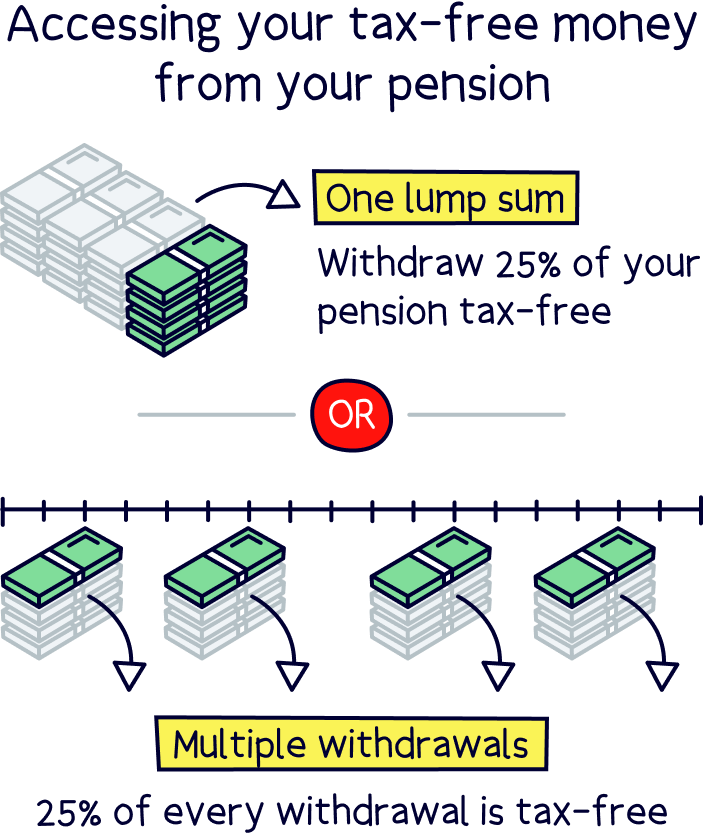
With the remaining 75%, you might pay Income Tax on it (the same tax as a job), but it depends on your income at the time. You’ll still get the Personal Allowance of £12,570 per year that you don’t pay tax on.
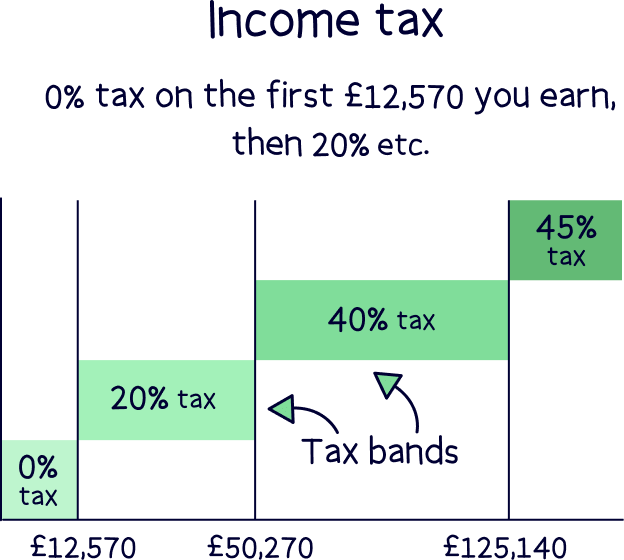
After you retire, your pension savings don’t just grind to a halt, they can keep growing! And the longer you leave it, the larger it can become.
Pensions get even better – they don’t count towards Inheritance Tax. And in fact if you sadly pass away before the age of 75, there’s no tax paid on your pension savings at all. After 75, whoever receives your pension may pay Income Tax on it, which will depend on their income at the time.
That’s because pensions don’t count towards your ‘estate’, which is all of your money, possessions and property added together. And anything over £325,000 can be taxed at 40%. Ouch.
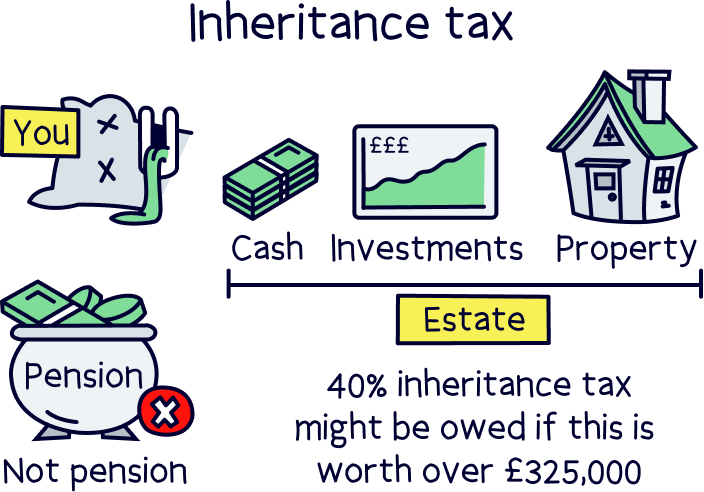
There are some rules with how much you can save into a pension, which is typically your total income each year (e.g. your salary), or £60,000, whichever is lower.
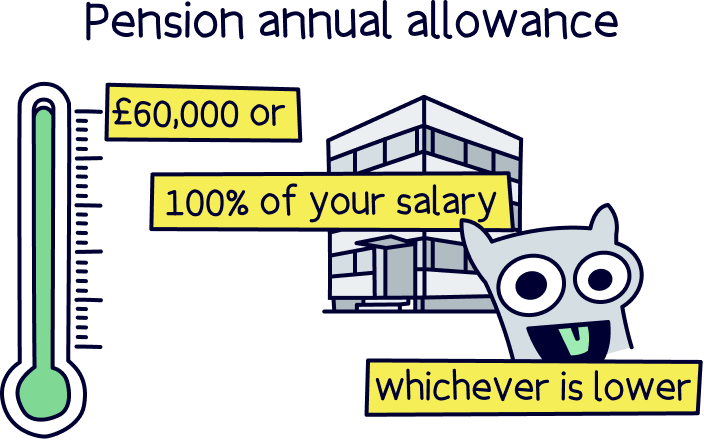
However, if you don’t have a job or any income, you can still save £2,880 into your pension, and get the 25% bonus from the government too – which makes it up to £3,600.
You can also use your allowance for the last 3 years too (if you have any pension open for those years), which is called ‘carry forward’.
Ready to get started with a pension? Your future self will really thank you – and the best bit, it’s easy to do, and you can do it all yourself in around 10 minutes.
Here’s how in 3 easy steps.
Let’s run through it. First, you’ll need to find a great pension provider that you like – it’s easier that it seems, and we’ve got our top picks just below.
Each pension provider is different, and has different fees and pension plans (where your money is invested), and even things like different levels of customer service, and whether there’s a great mobile app to use to manage your pension.
As a quick spoiler, we recommend checking out PensionBee¹, it’s easy to use, has low fees and a great record of growing pensions over time. Plus, we’ve managed to bag you £50 added to your pension for free, if you sign up with Nuts About Money.
Once you’ve picked your pension provider, no pressure, you can transfer it to a new provider whenever you like, it doesn’t have to be your provider for life.
Then, all you need to do is pick a pension plan. If you use our recommendations, they are easy to understand, and all managed by experts with the aim of growing your pension sensibly over time. There will probably be a standard option, or things like an ethical plan (where your money isn’t invested in things like fossil fuel companies).
And that’s it – all that’s left to do is to save away!
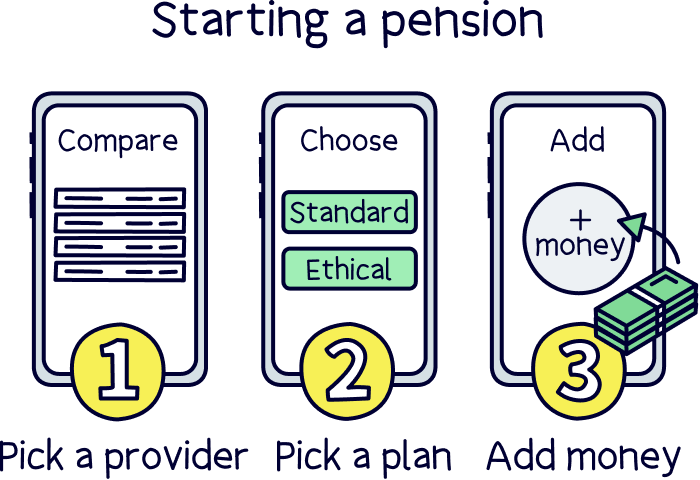
Remember: every time you add money you’ll get a massive 25% bonus from the government added automatically too.
We recommend setting up a monthly savings plan if you can, so you can typically forget about it and let it grow over time – but also add as much as you reasonably can when you set up your pension too, so it has more time to grow.
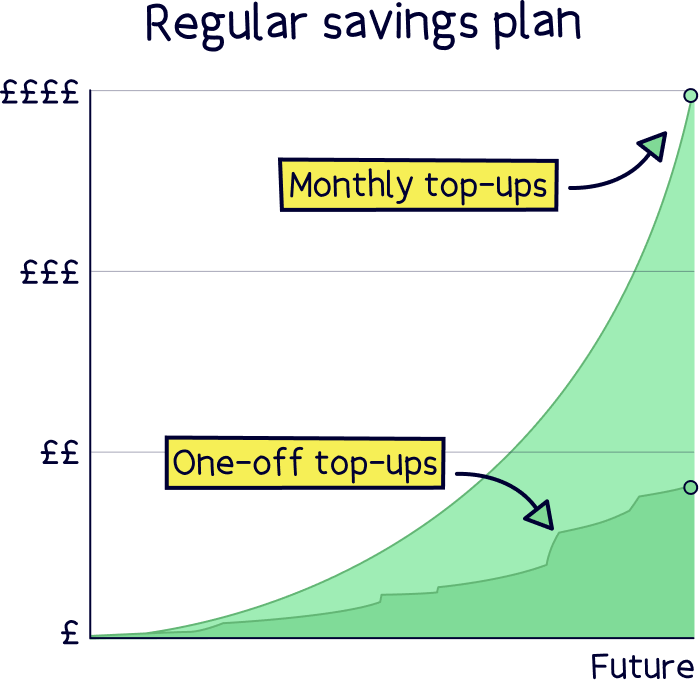
Easy to use, low fees and great customer service.
Get £50 added to your pension



PensionBee is our recommended provider – they’ve thought of everything.
Their 5 star rated app (and website) makes it easy to set up and use. You can open a brand new pension, or transfer your existing pensions across (they’ll handle all the paperwork).
Simply pick from an easy to understand range of pension plans, and that’s it, the experts manage everything from there.
It’s low cost, with one simple annual fee. The customer service is excellent, and you’ll get a dedicated account manager for any questions you might have.

And, when the time comes to retire, withdrawing from your pension is easy too.
You can also use them if you're self-employed or a company director.



Moneyfarm is a great option for saving and investing (both ISAs and pensions). It's easy to use and their experts can help you with any questions or guidance you need.
They have one of the top performing investment records, and great socially responsible investing options too. Plus, you can save cash and get a high interest rate.
The fees are low, and reduce as you save more. Plus, the customer service is outstanding.

Welcome bonus of £20-£100 + further bonus available



InvestEngine is a super low cost investment platform allowing you to save and invest within a pension and an ISA, and with a great range of investment options.
There's no fees for an account, and no commission to buy and sell investments. And there’s a wide range of investment options, with over 700 investment fund options (ETFs only).
It's more than just low cost though, it’s pretty easy to use, there’s some great features to help you invest, and the customer service is excellent.
Minimum deposit: £100
Best for: those looking for a low cost platform with a range of fund options

• Easy to use
• Very low cost
• Commission-free
• Great range of ETFs
• Great customer support
• Only ETFs (but a wide range)
• No financial advice
Our top pick is PensionBee – it’s easy to set up and use, low cost and has a great track record of growing pensions over time.
If you’d like to chat to a financial advisor (pension expert) about retirement planning, check out Unbiased¹ – it's a free service to find advisors in your local area.



Unbiased is a great online service to help you find expert financial advisors who can help with your pension.
It’s very popular, with over 10 million customers, and pretty much the go-to-place to find pension advisors local to you.
All advisors are fully vetted, qualified and have years of experience.
You’ll be able to chat on the phone, video call, or visit in person (depending on the advisor).

It’s free to use the service, you’ll pay the advisor directly if you choose to use them (fees vary per advisor and service you’d like).
Our top pick is PensionBee – it’s easy to set up and use, low cost and has a great track record of growing pensions over time.
If you’ve got any old pensions from old jobs, just lying around collecting dust, it’s a good idea to dig them out and get them working for you – moving them to a great provider that you choose.
Sometimes old pensions can be with pension providers with high fees, which are automatically taken out of your pension pot, and might not be growing very much. It’s a good idea to check where they are and transfer them to your new pension, where you can have much more control over where your money is saved.
Think of your pension like your phone contract or broadband, it pays to shop around and get the best deal!
Plus, with all your pensions in one place, there’s less chance you’ll forget about them when the time comes to retire and start withdrawing from them, which happens a lot more than you think (in fact, the research from the Association of British Insurers found out that there are around 3.3 million lost pensions in the UK, worth around £31.1 billion).
And of course knowing how much is in your pension pot will help plan your retirement better!
Combining all your pension pots together is called consolidating your pension, and is very popular.
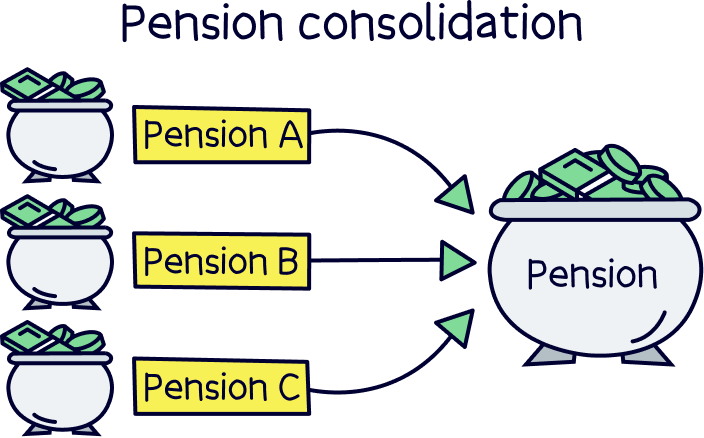
Nuts About Money tip: if you’re not sure where your old pensions are, try the government’s pension tracing service, or Gretel, a free service to find lost pensions.
There we have it – it’s not too late to get started with pension saving, whatever your age (except, well, over 75 when you can't open one). Having no pension at 60 isn’t ideal, but don’t let it get you down – the best thing is to start as soon as you can and try and make up for some lost years.
A great idea is to open a personal pension, which is a pension you set up yourself, and are able to make contributions directly into it (ideally regularly). And when you do, the government will add 25% to it too – giving you an immediate boost.
A pension also has lots of other benefits such as growing tax-free, growing after retirement, and being able to withdraw 25% tax-free too.
If you’re not sure where to get started, we recommend checking out PensionBee¹, it’s easy to use, has low fees and a great record of growing pensions over time. Here’s our PensionBee review.
There’s also Moneyfarm¹, where you can save into a pension alongside other great savings accounts, such as with a tax-free ISA. Here’s our Moneyfarm review.
For all the top options, check out the best personal (private) pensions.
Finally, if you want to learn about pensions, head over to our pensions home page.
The important thing is to start today, don’t put it off until tomorrow. Happy saving!
Our top pick is PensionBee – it’s easy to set up and use, low cost and has a great track record of growing pensions over time.
We’d love to hear from you, and it will help others too.
Our top pick is PensionBee – it’s easy to set up and use, low cost and has a great track record of growing pensions over time.